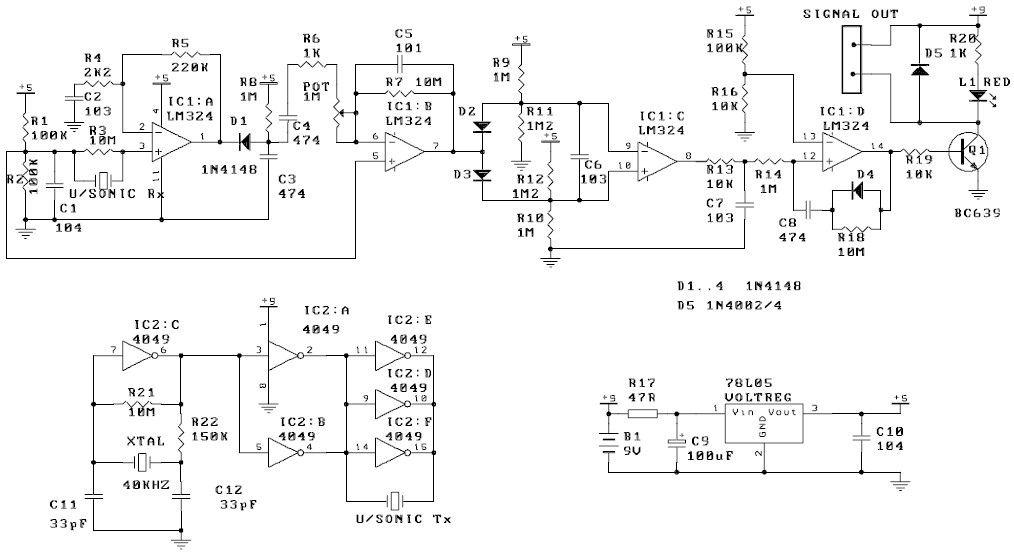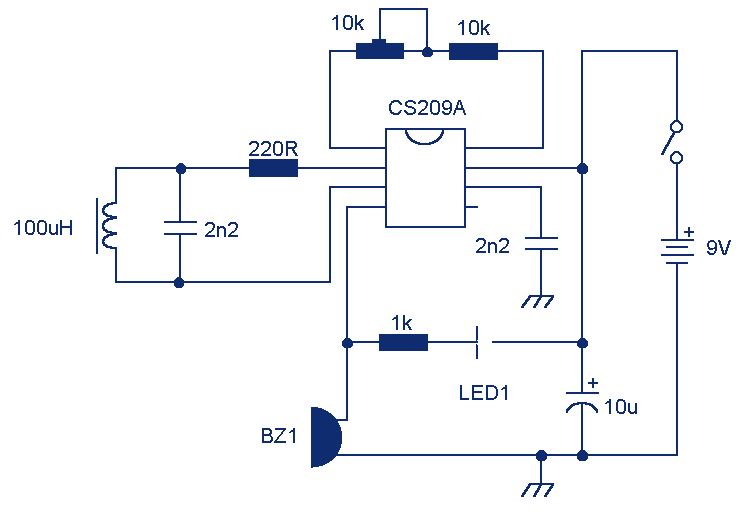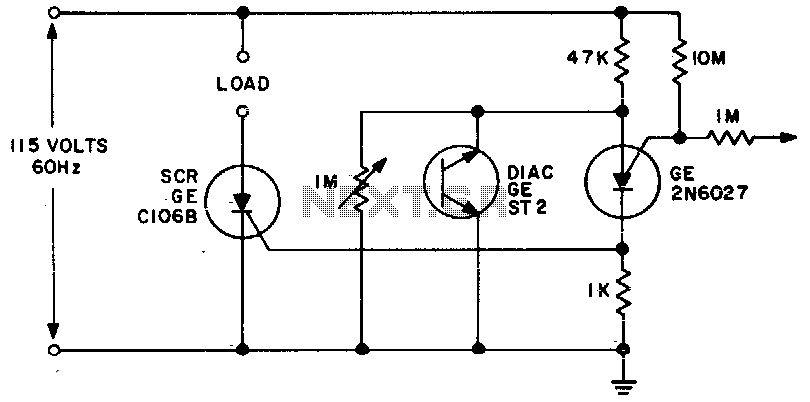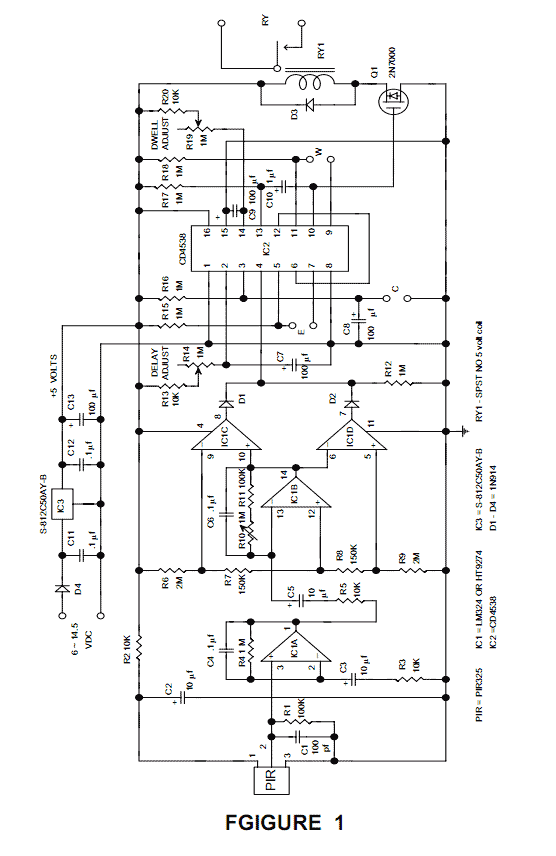
Dark Detector with LM555
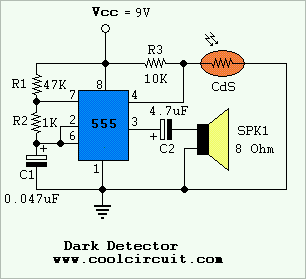
Dark Detector with LM555. This is a dark detector circuit that generates sound in the absence of a light source and remains silent when light falls on the CdS (Cadmium Sulfide) sensor.
The dark detector circuit utilizes the LM555 timer IC configured in a monostable mode. In this configuration, the circuit is designed to produce an output pulse when triggered by the absence of light detected by the CdS sensor. The CdS sensor exhibits a high resistance in darkness and a low resistance in light, effectively acting as a variable resistor in the circuit.
When the light level decreases below a certain threshold, the resistance of the CdS sensor increases, which can be used to trigger the LM555 timer. The timer's output can be connected to a speaker or buzzer, generating an audible sound to indicate the dark condition. The duration of the sound can be adjusted by changing the timing components (resistor and capacitor) connected to the LM555.
To construct the circuit, the following components are necessary: an LM555 timer IC, a CdS light sensor, a resistor (for setting the threshold), a capacitor (for timing), a speaker or buzzer, and a power supply. The circuit should be designed to ensure that the CdS sensor is adequately shielded from direct light to prevent false triggering.
In summary, this dark detector circuit effectively utilizes the properties of the LM555 timer and the CdS sensor to create a simple yet functional device that signals the absence of light through sound, making it useful in various applications where light detection is critical.Dark Detector with LM555 . This is a dark detector circuit. This circuit will generate sound if no light source and silence when light falling on CdS. CdS : Cadmium sulphide or cadmium. 🔗 External reference
The dark detector circuit utilizes the LM555 timer IC configured in a monostable mode. In this configuration, the circuit is designed to produce an output pulse when triggered by the absence of light detected by the CdS sensor. The CdS sensor exhibits a high resistance in darkness and a low resistance in light, effectively acting as a variable resistor in the circuit.
When the light level decreases below a certain threshold, the resistance of the CdS sensor increases, which can be used to trigger the LM555 timer. The timer's output can be connected to a speaker or buzzer, generating an audible sound to indicate the dark condition. The duration of the sound can be adjusted by changing the timing components (resistor and capacitor) connected to the LM555.
To construct the circuit, the following components are necessary: an LM555 timer IC, a CdS light sensor, a resistor (for setting the threshold), a capacitor (for timing), a speaker or buzzer, and a power supply. The circuit should be designed to ensure that the CdS sensor is adequately shielded from direct light to prevent false triggering.
In summary, this dark detector circuit effectively utilizes the properties of the LM555 timer and the CdS sensor to create a simple yet functional device that signals the absence of light through sound, making it useful in various applications where light detection is critical.Dark Detector with LM555 . This is a dark detector circuit. This circuit will generate sound if no light source and silence when light falling on CdS. CdS : Cadmium sulphide or cadmium. 🔗 External reference
